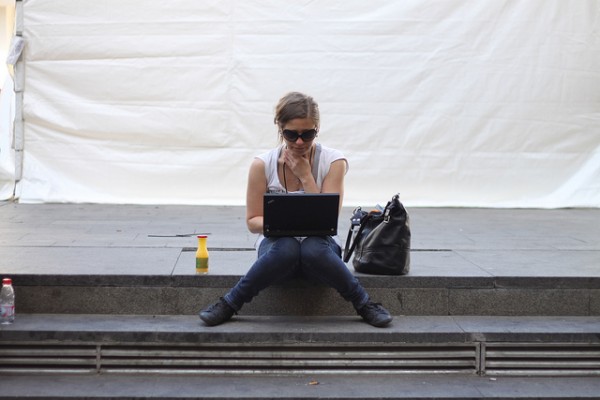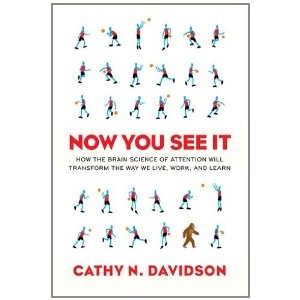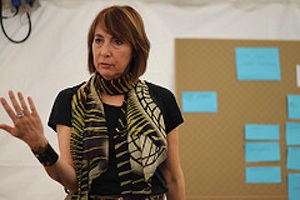'How the Brain Science of Attention Will Transform the Way We Live, Work, and Learn'

Duke University’s Cathy Davidson has staked out a reputation as a creative intellectual force committed to transforming the industrial model of education for the digital age. In 2010, President Obama nominated her to a six-year term on the National Council on the Humanities, a position confirmed by the Senate in July. She is co-director of HASTAC (Humanities, Arts, Science, and Technology Advanced Collaboratory) and co-director of the nationwide Digital Media and Learning Competition. She has been one of our featured bloggers at DMLcentral from the start, and her posts consistently provoke and inspire. Now, she has a new book out that is having the same effect. The book, Now You See It, takes up the controversial subject of attention, distraction, and youth in the digital age. It has stirred a lot of passionate commentary in the research realm and well beyond. We asked Cathy if we could spend a few minutes to ask her about the book’s principal ideas.
Your book centers on the idea of ‘attention blindness’. How did you come to focus on the science of attention? 
So much of the naysaying and hand-wringing about the digital (space) has focused its discussion on attention and the belief that multitasking is hurting us. What I really despise - and I even think it’s evil - is the line of argument that somehow this digital age is damaging our kids’ brains. It’s one thing to say it’s distracting us or that it’s not as successful as other forms of attention. We can deal with those statements and try to make changes. But it’s a horrible thing to do to parents, teachers, and kids when someone says it’s damaging a child’s brain.
The fire in the belly that made me write the book was that I really wanted to learn enough about the brain science of attention. I helped create the Center for Cognitive Neuroscience at Duke University, so I was reading a lot of dossiers from major scientists at the time. I was getting angrier and angrier and realized there was a need for someone to translate specialized research for a generalized audience so people don’t have to feel they are doing harm to their children.
You make the argument that distraction and disruption can be good for us. How can this be the case?
Everything we have learned about the brain in the last ten years from neuroscience suggests that there’s no such thing as a baseline or monotasking. When you are not distracted by the external world the brain gets busier. Eighty percent of the brain’s energy is spent talking to itself. In fact, the amount of energy that is used to switch from one external task to another is actually quite minor.
This whole silly discussion about multitasking makes it seem as if humans have nothing more important to do than check their email. But we know that emotional and physical upset are far more distracting than a new email. According to insurance experts, if people want to avoid car accidents they should not only avoid texting while driving but they should never get into the car after getting a divorce, losing a job, or getting diagnosed with a serious illness.
The thing about techno-determinism, which is the idea that you believe technology causes things, is that people forget that humans are humans. Multitasking might not be as efficient for some as it is for others, but the point is to be realistic. I think of myself as a techno-realist. The point of being realistic is to acknowledge that something isn’t working and then to determine what can be done to make it better. When we let technology run our lives, we lose power and become helpless. We start to believe it is damaging our child's brain. But if we tell ourselves that it is a tool and that all tools have affordances and hindrances, we can then see how it can better serve us. If we do that, then we have a chance.
Many would argue that the world of technology is so vast and ever-changing that it will be impossible for educational institutions to ever keep up. How do you break down the very daunting task of restructuring education without overwhelming educators in the process?
I hate the punitive anti-teacher attitude we have today. It’s a horrific mode of blaming the teacher. Some of the most innovative teaching for a digital age has nothing to do with technology but has everything to do with freeing ourselves from the forms of assessments, mainly its mechanical nature, and the dull division of knowledge into very discreet categories.
The Internet puts back together all the things the Machine Age broke down: the separation of thinking from making, the separation of thinking from doing, and the separation from kids and their communities. We must break out of the four-walled classroom model and teach children how to use human resources and digital resources at their disposal. That’s a thought process; it’s not a technology process.
Today, there are so many computer scientists figuring out systems that could be adaptable to the classroom. I am very intrigued by the new development community TopCoder. It puts me in touch with more than 300,000 code developers. I can access a programmer’s TopCoder rating and see every award a developer has given him/her and for what reason. 
We could incorporate a system like TopCoder into the classroom. Teachers would love it because it would give them more ability to collectively judge students, and in turn students could even judge each other as part of the process. Learning judgment is a digital literacy that every child should understand. How to give good judgment and how to receive good judgment are equally important. Every child needs to learn how these concepts can change the outcome of a situation.
Open-source collaboration sites are very popular tools in online communities, but they still have a difficult time being accepted as a credible source at the university level. How and when do you think those barriers will give way?
Even though librarians went through a period of skepticism, it’s mainly the American Library Association that has conducted study after study that now shows Wikipedia is as reliable of a source as any other encyclopedia out there. I think its astonishing that the people [librarians] who should be most threatened by giving up their power are conducting these studies and publishing the results. Librarians are realizing that this form works and are now looking to use open-source sites to better themselves in their profession. Schools have made a huge turn around in the last several years as they train new librarians in the possibilities of openness rather than the idea that the reference librarian is the only person who has the goods.
In the classroom, it’s mixed. HASTAC (pronounced Haystack) was the first to embrace sites like Wikipedia. We thought it should be inspiring to educators to know that people around the world love to contribute information and edit each other’s knowledge for free. This wasn’t even thought to be part of human nature before so suddenly the idea that someone would do it for free seems crazy. But now it is the largest encyclopedia the world has ever known. I think more and more educators are embracing open-source sites, and some never will because they feel threatened.
What has surprised you most through this journey you’ve been on with Now You See It?
I am fascinated by how the business community has taken such an interest in my ideas. There has been an insane embrace from business leaders. I am contacted daily by major companies such as Intel and Google who thank me for what I am doing because they know we need a generation that understands the principles in this book. I think it’s interesting that it’s taking educators a little longer, but it’s also inspiring because if there are jobs that need students, it will help justify making major changes in our educational systems.
Now for a not-so-serious question: What was the first tech gadget you purchased that significantly altered your way of life?
It was a Kaypro computer in 1985. I brought it with me the first time I traveled to Japan. It was hilarious - this behemoth - in a huge metal case. Before when we typed we had to submit carbon papers, and if we needed to make changes we had to use white out or re-type the entire page. I was so happy to have the freedom to make changes on the page. Last year I made my students get out typewriters and carbon paper just so they could understand what a huge revolution it really was.
Credits for banner image and candid of Cathy: Samuel Huron http://www.flickr.com/photos/samuel-huron/5148996526/in/photostream/